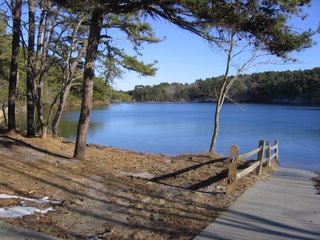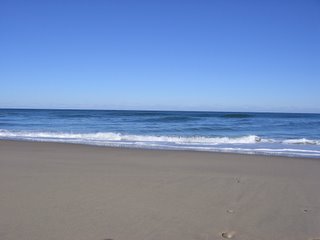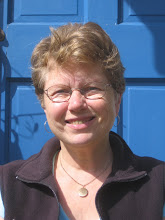
To your left, please admire Long Pond. Before any more walking, how about a little local lore?
Here are some facts and figures to consider:
Wellfleet has 17 freshwater ponds, 4 public beaches on the Atlantic Ocean, and 4 public beaches on Cape Cod Bay.
There are 19 restaurants (of which 4 stay open during the winter), 7 ATMs, 3 banks,
1 theatre, 1 movie theatre with 4 screens, 1 fabulous drive-in,
1 wildlife sanctuary (with 4 composting toilets and 7 walking trails across 1100 acres of salt marsh),
23 art galleries,
2 campgrounds, 3 inns, 4 motels, 18 bed & breakfasts, of which 3 stay open during Quiet Season,
and 10 real estate firms.
Wellfleet possesses the only clock in the world that strikes on ship’s time (at the First Congregational Church) and was the site of Marconi’s first wireless transatlantic transmission.
A resident of Wellfleet is called a “Wellfleetian.”
The scenery draws artists and photographers to what has become known as Cape Cod's "art gallery town."

The two major industries are tourism and shellfishing.
61% of Wellfleet is National Seashore, a nature park preserved for ever.
The population is a mixture of residents and non-residents. As of today, 3133 people live here year round. During 2004, the town clerk recorded 23 births and 42 deaths, which seems to indicate the native population is not renewing itself. More and more people are buying second homes in Wellfleet. 69 single-family homes exchanged hands in 2005.
24,000 personal property bills were sent out this fall.
Around 70% of the property owners are absent during the winter and come down sporadically in the spring and fall. Non-residents appreciate Wellfleet almost more than residents do and spend as much time here as they can. Five years ago they formed an association to ensure their voice would be heard when decisions were made on the town's future. Many of them spend the summer here and plan to become residents when they retire.
Recently both residents and non-residents have started renting out their homes for weeks at a time during the summer, unable to resist the additional income.
"Tenants" rent these homes by the week. They usually live in cities. During the winter they dream of their vacation in Wellfleet. Some come in June, others July. The majority chooses August when kids get home from camp. Those in the know arrange to be here in September after school starts.
The summer population also includes day-trippers who stop in Wellfleet, sometimes overnight, on their way to Provincetown. They start showing up as soon as the temperature rises in May.
Last, but not least, we have the tourists who visit for a couple days and usually get hooked on Wellfleet’s beauty. They stay at the inns, bed & breakfasts, or motels and usually return, often as tenants.
My parents started out as tourists then became tenants. They were summer people for several years before purchasing a house.
We stayed in a cottage on Cove Road when I was a toddler half a century ago. I have photos of them as newlyweds, enjoying Wellfleet’s bounty. When my father retired, the choice of where to live seemed obvious. They would move to Cape Cod!
My parents called Wellfleet home for 35 years, yet they were never considered “natives” by the town’s inhabitants. Hardcore natives like to call anyone who wasn't born here a "washashore." The washashores now include retirees, writers, artists, a large part of the business community, shellfishermen, several selectmen, etc.
I never liked the term “washashore,” pejorative somehow. In my opinion, there should be room for everyone. People who choose to live here love the town and are in no way second-class citizens.
Sven and I have been residents of Wellfleet for nine years now. We try to take advantage of nature every day and enjoy the clean air. Cape Cod does not have the art museums of Paris or the excitement of the Cambridge/Boston area, but it is home. Almost as beautiful as Sweden, Sven might add. It would be hard to live anywhere else.

 Each clutched a buoy, a prize with which to decorate a house. I imagined the clapboard, covered with buoys, blue, green, white, orange and red.
Each clutched a buoy, a prize with which to decorate a house. I imagined the clapboard, covered with buoys, blue, green, white, orange and red.  There is a lesson to be learned here. Pebbles glisten, wet, in the sun. Once home, they lose their appeal, no longer part of nature. We are all part of nature. We live, we die. We leave the environment behind for future generations. How criminal to leave it in such a sorry state! What a pity our leaders do not take the time to walk Le Count Hollow Beach and meditate on life. They would quickly switch priorities!
There is a lesson to be learned here. Pebbles glisten, wet, in the sun. Once home, they lose their appeal, no longer part of nature. We are all part of nature. We live, we die. We leave the environment behind for future generations. How criminal to leave it in such a sorry state! What a pity our leaders do not take the time to walk Le Count Hollow Beach and meditate on life. They would quickly switch priorities!











